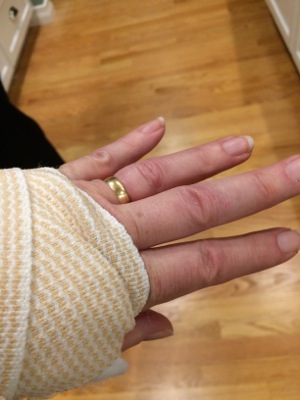Are you suffering from killing back pain? Well, you are not facing this problem alone. Lower back pain particularly attacks your spinal cord. When you disturb the actual curvature of your spine due to improper sleeping habits and postures, you get back pain. There is a very interesting fact that you might be surprised to know.
Lower back pain is not like any other terminal diseases, such as arthritis or cancer. You get this problem when you stress your spinal cord by awkwardly sleeping postures or bad sitting positions. Change your lifestyle to get rid of back pain, as it is not something quite uncommon or irreversible to treatments. To keep your back straight, you need to align your ligaments and muscles to let them relax while sleeping.
Improve your sleeping cycles and postures to get a good night’s rest, without hurting your back. Here are some of the ultimate sleeping postures that you should follow every night, to get relief from back issues.
How to sleep properly?
-
Choose the perfect mattress for yourself
According to various studies, a good mattress helps you get a good sleep. If you sleep on the appropriate mattress, it heals your back pain and also maintains a strong and fit back. Sleep on a mattress that lets you feel the best rest and also relieves your soreness when you wake up. While choosing the right mattress, go for the one that exactly supports the natural fit of your body curves. In other words, buy a mattress that will support your spine in its original curvature and make you feel comfortable.
If you have a partner in bed, make sure you get ample space to turn over comfortably in any sleeping positions. Remember to replace your mattress after every ten years approximately. If you are already suffering from back pain, consult with your physician about which type of mattress to sleep on.
-
Get the correct pillow
Normally, you must be using pillow just to support your neck and head. However, you can use pillows for a lot of other purposes as well to improve your sleep. Taking extra pillows in your bed also aid in maintaining your spinal curvature in the correct position. The pillow that you take to support your neckline should be apt enough to keep your neck in position. Proper neck positioning will also contribute to your comfortable sleep.
Do not place a pillow at a greater elevation from your bodyline. It may otherwise lead to muscle strain on your neck, shoulders and even your back. Always pick a pillow that is in perfect alignment of your neck with your shoulders and chest. Your pillow must permit adjustable sleeping postures according to your body curvature. This will, in turn, help you to sleep at ease in various postures. Remember to swap all your pillows each year for ensuring proper body rest.
Which body alignments to follow while sleeping?
The first and foremost thing that you should remember while sleeping is to keep your neck, shoulders and back aligned.
- If you prefer sleeping on your back, rest a little pillow beneath your knees. By doing so, you can reduce stress on your spinal cord, and also support your original lower back curvature. The pillow you are taking to support your head should also maintain the natural alignment of your shoulders and neck.
- When you sleep on your stomach, it puts more stress on your lower back. In such a sleeping posture, your spinal cord becomes more prone to getting out of its natural position. Your body becomes more like a curved arc than straight alignment. How can you correct it without compromising with your sleeping posture? Put a flat pillow beneath your stomach and pelvic region to hold your spine in proper alignment. If you are napping on your stomach, place a flat pillow under your head. It is even better if you do not take a pillow at all.
- When you nap on your sides, put a strong pillow in between your knees. It will reduce stress on your lower back and hips, by preventing your upper leg from disturbing your spinal alignment. Try placing your knees towards the upward direction, near your chest. Take a flat pillow under your head to keep your spinal cord straight. You may even take a firm pillow beneath your waist, to support the curvature of your spine.
- If there are gaps between the mattress and your body, insert pillows to fill in those gaps. This will help to keep your body in straight alignment while you sleep.
- Do not mess up your body alignment when you switch sides while sleeping.
- When you turn to different sides on the mattress, avoid bending or twisting your back. Keep your body loose and comfortable as far as you can to prevent yourself from hurting your lower back.
Other little helpful tips
Do you feel comfy while dozing off in a reclining chair? However, you should not actually sleep in recliners if you have pain in your lower. What if you got isthmic spondylolisthesis? Can recliners be helpful for you in such cases? Surprisingly, it is!
Isthmic spondylolisthesis is a defect of your lumber and spine, where one of your vertebrae slips from its position over another. Do not confuse isthmic spondylolisthesis with ‘slipped disc’, even when both the conditions involves slippage. Isthmic spondylolisthesis involves slippage of a vertebra. On the other hand, ‘slipped disc’ involves disc rupture, allowing intervertebral fluids to leak out and hammer on nearby nerves.
If you sleep on recliners, it will maintain a good angle between your torso and thighs. It will eventually put less pressure and strain on your spinal cord. So you can consider recliners if you got isthmic spondylolisthesis to benefit your back pain.
Improper sleeping schedules may also cause back pain. Chalk out proper sleeping cycles and rest your body sufficiently after a whole day’s work. You may consider doing a little yoga before you go to bed, to keep away from back pain.





